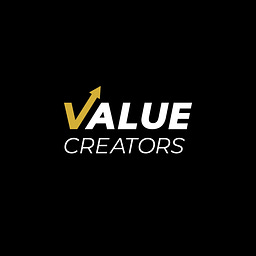Episode #54. How to Build a Multi-Million Dollar Brand: A Conversation with Neil Twa
What if you could leverage billions of dollars in pre-built infrastructure to grow a thriving e-commerce business without the burden of warehouses, logistics, or massive overhead? How can small innovations—rather than big inventions—solve customer problems and create scalable brands?
In this episode of the Value Creators Podcast, Hunter Hastings sits down with Neil Twa, CEO and Co-Founder of Voltage Holdings, to explore the concept of “almost automated income.” With over 17 years of experience building businesses both online and offline, Neil shares his expertise in scaling multi-million dollar brands through Amazon FBA and other e-commerce channels. Since 2012, he’s launched 5+ personal brands, generated tens of millions in revenue as an 8-figure seller, and helped over 1000 entrepreneurs grow their businesses through consulting, coaching, and mentoring.
Neil walks through key principles, including:
-
Focusing not on products but on customer value creating solutions that deliver real value by meeting real needs.
-
Choosing profitable offerings with high margins through a data-driven “Greenlight Process.”
-
Balancing demand creation (social media, influencers) with supply chain mastery.
-
Scaling efficiently with small teams, automation, and AI systems.
Listeners will learn how to identify winning products, test market potential, and build exit-ready brands that can sell for 3-15x their earnings. More than just a business model, Neil highlights how entrepreneurship can create purpose, freedom, and a fulfilling lifestyle.
For entrepreneurs looking to tap into today’s generative platforms, this episode is packed with actionable insights and inspiration to achieve success in the new economy.
Resources:
➡ 📚 Get a Free Copy of Neil’s Book “Almost Automated Income with FBA” Using code: VALUECREATORS
Connect with Neil Twa on LinkedIn, Instagram, X, and YouTube.
Connect with Hunter Hastings on LinkedIn
The Value Creators on Substack
➡ Learn What They Didn’t Teach You In Business School: The Value Creators Online Business Course
Knowledge Capsule:
1. The Rise of Generative Platforms for Entrepreneurs
-
Entrepreneurs now benefit from pre-built infrastructure, including warehouses, supply chains, and platforms like Amazon FBA.
-
This “almost automated income” model allows businesses to leverage billions of dollars in infrastructure investments without upfront costs.
2. Amazon FBA as a Strategic Platform
-
Amazon FBA (Fulfillment by Amazon) offers unparalleled logistics and customer support, enabling businesses to scale rapidly.
-
While entrepreneurs pay platform fees, Amazon’s infrastructure and last-mile delivery streamline operations for sellers.
3. Choosing the Right Platform and Business Model
-
Entrepreneurs should evaluate platforms (e.g., Amazon, Walmart, TikTok shops) based on their business goals and product fit.
-
Each platform offers unique advantages, but Amazon’s massive demand capture makes it an ideal starting point for physical product businesses.
4. Innovation Over Invention
-
Entrepreneurs should focus on small product innovations rather than completely new inventions.
-
Successful products solve customer problems through slight improvements, as demonstrated by the evolution of Instapot and air fryers.
5. Customer-Centric Business Design
-
The starting point for any business is identifying customer problems and innovating to meet their needs.
-
Neil emphasizes that perceived value is subjective and depends on how well the product answers a customer’s core questions or concerns.
6. Profitability Over Vanity Metrics
-
Focusing on unit profitability and understanding margins is critical for long-term success.
-
Many businesses mistakenly chase high sales volume without considering net profits, which can lead to operational burdens.
7. Identifying Profitable Products and Target Customers
-
Neil’s “Circle of Confidence” strategy starts with familiar markets and customers (e.g., women aged 27-40, who drive online purchases).
-
Profitable products typically fall between $50 and $500, offering high margins without requiring massive volumes.
8. The Greenlight Process and Market Testing
-
Before scaling, products are market-tested using a 90-day process with small order quantities (100 units).
-
Feedback from the test phase informs product improvements and differentiations, ensuring better market success.
9. Building Brands as Valuable Assets
-
Entrepreneurs should aim to build scalable brands, not just sell products, to create exit-ready businesses.
-
Assets are sold at 3-15x EBITDA, making the exit a key financial reward for successful business owners.
10. Managing the Demand and Supply Chains
-
Businesses must balance demand creation (e.g., through social media, influencers, viral videos) with efficient supply chain fulfillment.
-
Platforms like Amazon act as “demand capture engines,” validating products and creating trust among customers.
11. The Power of Process and Automation
-
Systems, automation, and AI allow businesses to operate efficiently with minimal overhead.
-
Entrepreneurs can build 7-8 figure businesses with small teams (e.g., one lead and five VAs) and focus on CEO-level strategy.
12. Entrepreneurship as a Purpose-Driven Lifestyle
-
Neil emphasizes building businesses with a clear social mission, such as family time, freedom, and generational wealth.
-
The entrepreneurial journey involves calculated risks, discipline, and resilience, leading to a flexible and fulfilling life.
Show Notes:
0:00 | Intro
3:21 | How Does Neil View Entrepreneurial Business Growth?
5:19 | Platforms That Drive Business Growth and Their Impact on Success
10:09 | Customer-Centric Business Models
16:49 | Subjective Value VS Solution Value
19:58 | Value Creators Online Course
21:11 | Price Value Choosing Customer
24:45 | Finding Suppliers
29:02 | Profit & Balance Sheet: Building Profitability and Assets
34:19 | Neil Shares his Value Proposition: Innovation and Product Development
39:06 | CEO Operators: Future of Economy
40:20 | Process, Process, and Process: Building a Brand and Capturing Demand
44:15 | Wrap-Up
